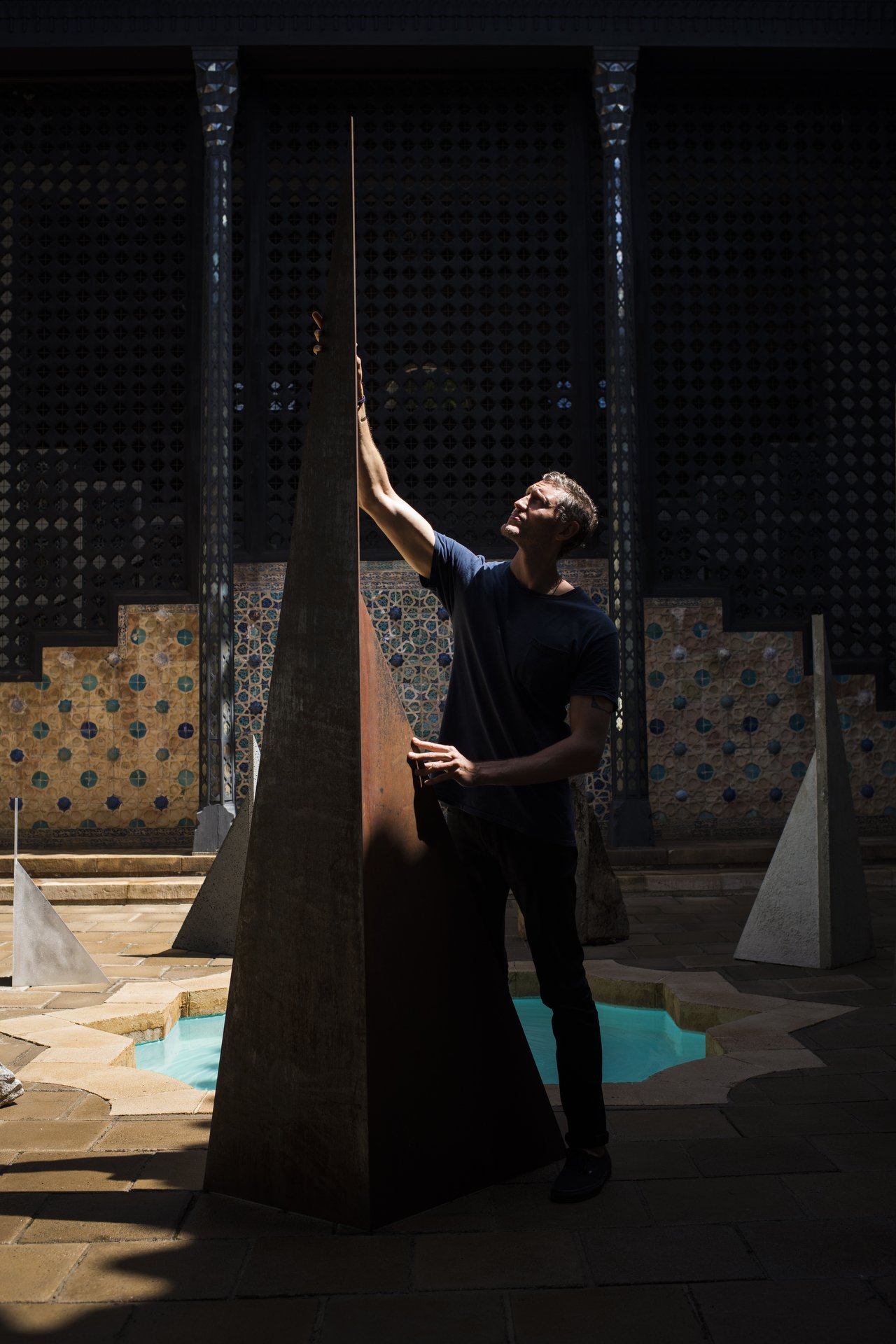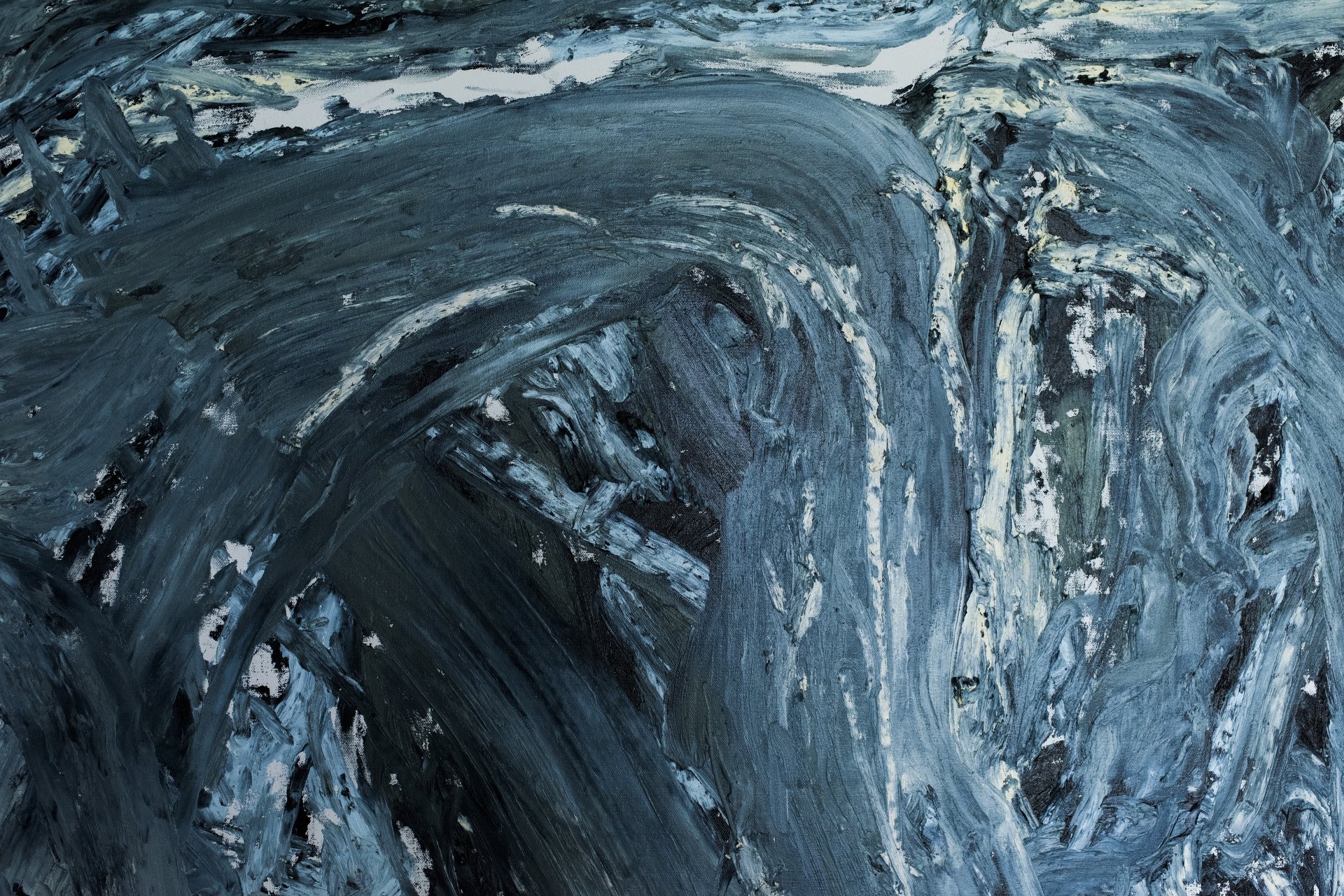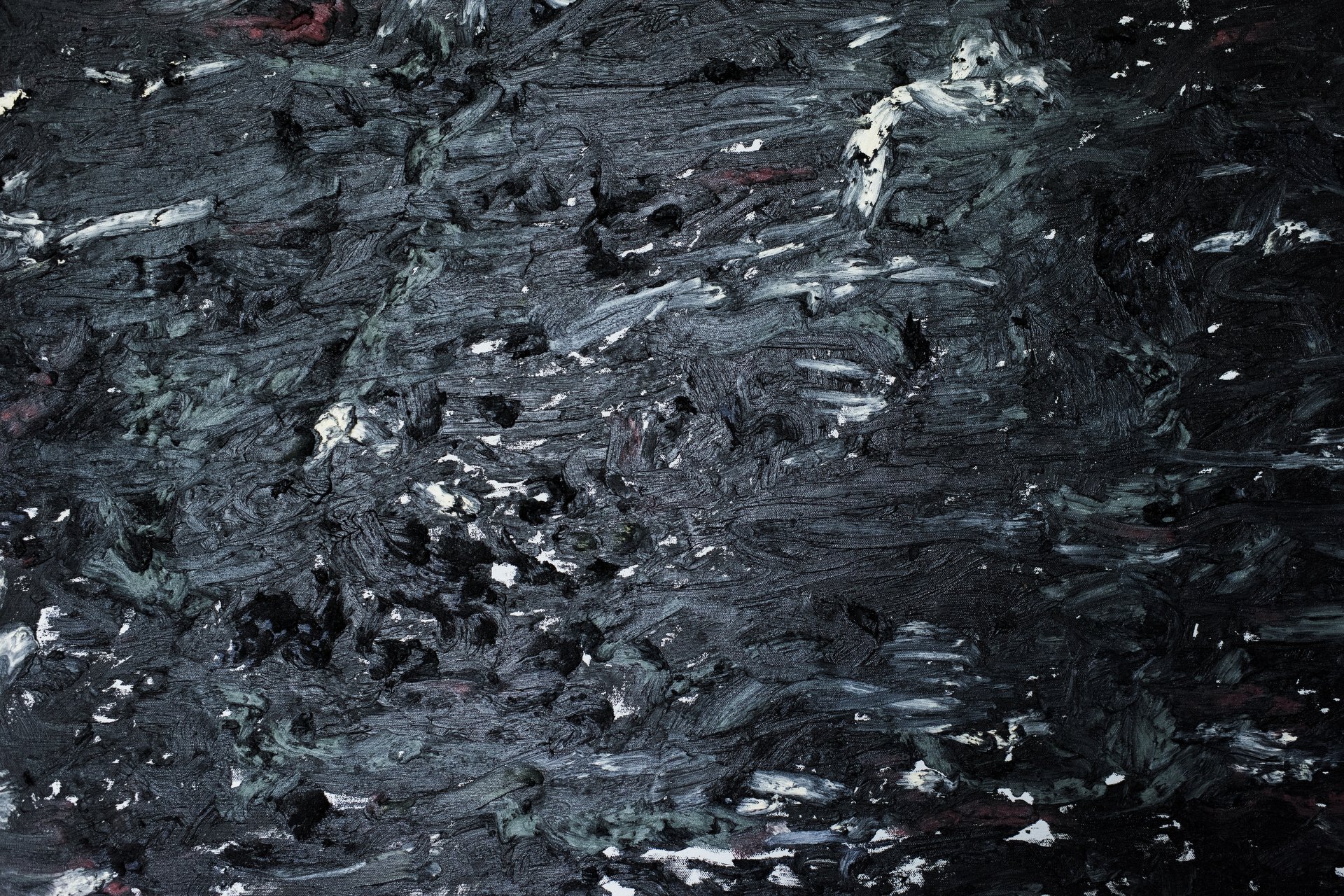Finding Sanctuaries






Like many people, Kamran Samimi wonders at his place in this universe, questioning where and how he belongs to it.
Growing up in Laupāhoehoe on Hawai‘i island, Samimi spent much of
his time traversing its forests, a rural landscape not unlike another realm. It piqued an interest in exploring other worlds, like outer space and underwater, and, combined with a natural knack for drawing—a skill his parents encouraged for self-expression— equipped Samimi with a tool that helps him confront these ongoing musings.
“Being a haole kid who has this unusual name and ... I’m obviously not Native Hawaiian or Asian, and so I don’t look like I belong here, but this is where I grew up, this is what I know, and so I feel like I should,” says Samimi, who was born to parents of Iranian and Norwegian descent. “Where is it I do belong? Is it Iran? Is it Norway? But I’ve never been to those places ... and I don’t speak either of those languages.”
It’s an intimate self-examination that Samimi often continues to analyze through his art in a career that has taken him ’round the globe, exhibiting at locales spanning from The Andy Warhol Museum in Pittsburgh, Pennsylvania, to Tokyo Midtown in Japan. Here in Hawai‘i, his works have been displayed in the likes of Honolulu Museum of Art, Kirsch Gallery and Kahilu Theatre, and at University of Hawai‘i.
Now, Samimi is adding yet another venue to his repertoire as the first local ever to be appointed artist-in-residence at Shangri La Museum of Islamic Art, Culture & Design since it first opened to the public back in 2002.
Titled Sanctuaries, the three-component exhibit features artwork in a variety of mediums that Samimi completed over the course of 14 months,
an extension of the original time frame resulting from the impacts of COVID-19.
“It was really an incredible and really meaningful time working down there, especially, I think, framed by the pandemic and what a strange year it was for everybody,” says Samimi, who has a BFA in printmaking and MFA in print media and sculpture from University of Hawai‘i at Mānoa. “I think of it as an anchor in a storm.
“Shangri La became a sanctuary where I could kind of dive in and explore these questions that I’ve had for my whole life: Who am I? Where do I belong? What does it mean for me to be here right now? Not just in this small piece of earth at Shangri La or on O‘ahu or Hawai‘i or the Pacific Ocean, but on this planet, this spot in the universe.”
In “Of Stone and Sea,” for example, Samimi created a diptych self-portrait of sorts using materials like cement, acrylic, India ink, powdered stone, pigments, coffee and iron filings on two canvases, “channeling the structure of stone and the fluidity of water, combining those two seemingly opposites because I see those two sides of myself.”
For “Dark Matter,” meanwhile,” Samimi completed three oil paintings by using rubbings of large boulders from the Shangri La property that pay tribute to a sense of place.
“They’re directly reading the surface of the stone, but also, I’m not trying to re-represent what the stone looks like, but instead reach inside the stone and show what the essence of the stone might look like,” he explains.
Lastly, ‘‘Ascendants” features a collection of nine sculptures in the courtyard handcrafted using a different material for each: CorTen steel, earpod wood, Plexiglas, concrete, monkeypod wood, basalt, aluminum, marble and granite.
In this, Samimi brings to life his ancestry and intergenerational connection, as he puts it. “How am I connected to these people that I have never met, but I descend from—and not just the Persian ancestors from my dad, but all of my ancestors,” he says. “In that sense, if we zoom way out, 200,000 years, we all share the same ancestors, so it’s all of those people.
“How are we connected? Not how are we different, but how are we connected?” he adds. “That is kind of a monument that honors all of those people that have come before us, and using the materials that those people have used to build our world.”
And while Samimi certainly unearthed the answers to some of his life questions, gaining a sense of closure or internal completion isn’t exactly his goal.
“I’m not so interested in the answers to those questions,” he says. “I keep asking the questions and then I get better questions.
“So I might get the answer to one, and then I get five new questions that come from that answer—and that to me is the most interesting thing.”
With his work at Shangri La complete, Samimi now is looking ahead to private commissions and an exhibition in January with a San Francisco-based gallery that currently are keeping him quite busy.
To keep up with Samimi and learn more, visit kamransamimi.com and find him on Instagram (@kamransamimi).
Sanctuaries is virtually available to the public at shangrilahawaii.org through Sept. 30.
